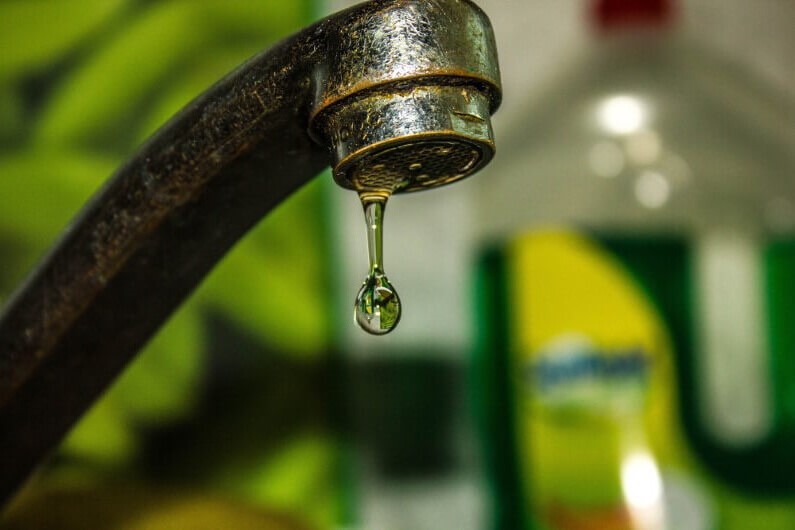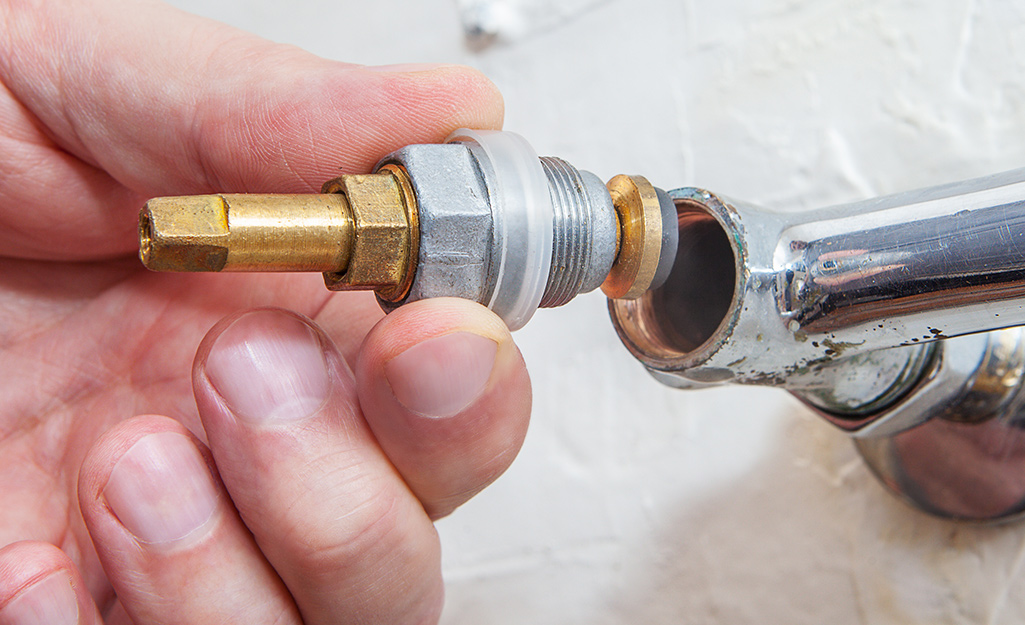Learning the Relevance of Correcting a Malfunctioning Faucet
Learning the Relevance of Correcting a Malfunctioning Faucet
Blog Article
Are you looking for facts and techniques concerning How to Fix a Dripping or Leaky Faucet ?

Trickling taps could seem like a small aggravation, however their effect exceeds just the nuisance of the audio. From wasting water to incurring unneeded economic expenses and health and wellness risks, ignoring a trickling faucet can result in numerous repercussions. In this article, we'll look into why it's vital to address this usual family issue promptly and properly.
Wastage of Water
Ecological Impact
Leaking taps add substantially to water wastefulness. According to the Environmental Protection Agency (EPA), a solitary faucet trickling at one drip per second can throw away greater than 3,000 gallons of water annually. This not only strains water sources but likewise impacts environments and wild animals dependent on them.
Financial Expenses
Boosted Water Costs
Past the environmental effect, dripping taps can blow up water costs substantially. The built up wastage in time translates right into greater energy costs, which could have been stayed clear of with prompt repair services.
Potential Building Damages
Furthermore, extended trickling can cause damage to fixtures and surface areas bordering the tap. Water accumulation can cause staining, rust, and even structural concerns if left ignored, causing added repair prices.
Health Worries
Mold and Mildew Growth
The consistent presence of wetness from a dripping faucet produces a suitable atmosphere for mold and mildew growth. These fungis not just endanger interior air high quality but likewise pose health and wellness dangers, especially for individuals with respiratory problems or allergies.
Waterborne Diseases
Stationary water in leaking faucets can become a breeding place for microorganisms and various other microorganisms, increasing the threat of waterborne illness. Pollutants such as Legionella microorganisms flourish in stationary water, possibly bring about significant ailments when consumed or breathed in.
Do it yourself vs. Expert Fixing
Advantages and disadvantages of DIY Repair
While some might try to take care of a trickling faucet themselves, DIY repairs feature their own set of obstacles. Without correct knowledge and tools, DIY attempts can intensify the concern or cause incomplete repairs, lengthening the problem.
Benefits of Working With a Professional Plumber
Hiring an expert plumber makes certain that the underlying cause of the dripping faucet is dealt with successfully. Plumbers possess the know-how and tools to identify and fix faucet issues efficiently, saving time and decreasing the danger of further damage.
Step-by-Step Guide to Fixing a Dripping Faucet
Devices Needed
Before trying to deal with a leaking tap, collect the essential devices, including an adjustable wrench, screwdrivers, replacement parts (such as washers or cartridges), and plumber's tape.
Usual Tap Issues and Their Solutions
Recognize the kind of faucet and the specific concern causing the drip. Common troubles consist of damaged washing machines, corroded valve seats, or faulty O-rings. Describe supplier directions or on the internet tutorials for detailed guidance on repair work.
Preventive Measures
Regular Upkeep Tips
To stop leaking taps, perform regular upkeep such as cleansing aerators, inspecting for leaks, and replacing worn-out parts promptly. Furthermore, consider setting up water-saving tools or upgrading to much more reliable components.
Significance of Prompt Fixes
Addressing leaking taps as quickly as they're noticed stops further water wastage and possible damages, inevitably saving both water and money over time.
Effect On Property Value
Perception of Well-Maintained Residential Or Commercial Property
Preserving a residential or commercial property in good condition, consisting of addressing upkeep problems like trickling faucets, boosts its perceived worth and desirability among possible buyers or renters.
Impact on Resale Worth
Residences with properly maintained plumbing fixtures, including faucets, command higher resale worths in the real estate market. Attending to trickling taps can add to a positive perception during building examinations and negotiations.
Ecological Duty
Specific Payment to Conservation
Taking responsibility for fixing dripping taps lines up with more comprehensive initiatives toward water conservation and ecological sustainability. Every individual's actions jointly make a considerable impact on maintaining valuable resources.
Lasting Living Practices
By focusing on prompt fixings and embracing water-saving routines, people add to sustainable living practices that benefit both existing and future generations.
Verdict
Addressing a trickling tap exceeds mere ease; it's a crucial action toward preserving water, minimizing financial prices, and securing health and wellness and residential or commercial property. Whether via do it yourself repairs or specialist support, acting to deal with leaking taps is a little yet impactful means to promote accountable stewardship of resources and contribute to a much healthier, more lasting future.
How to Fix a Leaky Faucet: Step-by-Step Repair Guide
A leaky faucet may seem like a simple annoyance, but if it's not fixed promptly, that leak could cost hundreds to potentially thousands. From water damage to mold, mildew, and high water bills, even a tiny leak can be catastrophic if left unattended. Damage like this can even affect the overall value of your home, so it's important to take the right approach for leaky faucet repair. You may need the help of a plumber in some cases, but we've got a few tips you can try on how to fix a leaky faucet before calling the pros.
Four Faucet Types
When you're learning how to fix a leaky faucet, the first step is knowing what kind of faucet you're working with! There are four common types.
Cartridge Faucets
Cartridge faucets come in one- or two-handled varieties. In one-handled cartridge faucets, hot and cold water combines in a single cartridge. In the two-handled versions, hot and cold water are controlled separately and mixed in the faucet.
Ball Faucets
Ball faucets have a single lever you push up and down to adjust the pressure and rotate to change the temperature. A slotted metal ball controls the amount of water allowed into the spout.
Compression Washer Faucets
They're the oldest type of faucet, but they're still used in many homes — especially older ones. Compression faucets have two separate handles that, when turned, raise or lower the washer that seals a water valve. This valve stops water from flowing through the faucet when it is turned off.
Disc Faucets
Disc faucets rarely need to be repaired due to their maintenance-free design. The water flow is controlled by two discs — the upper one raises and lowers against a fixed lower disc, creating a watertight seal. If your disc faucet starts leaking, you may need to replace the seals or clean residue buildup from the inlets.
Fixing a Leaky Faucet
Step 1: Turn Off the Water
Whether you're learning how to fix a leaky bathtub faucet or how to fix a leaky kitchen faucet, always turn off the water supply to your working area when you're fixing a leak. The last thing you want is a flood added to your list of things to fix.
Look for the shutoff valves below your sink or around the tub and turn them clockwise to stop the water flow. If your faucet doesn't have shutoff valves, you may need to turn off the water for the whole house. Check to make sure it's off by turning the faucet on. If nothing comes out, you're ready to start the repair.
Step 2: Take Apart the Faucet
How you disassemble your faucet depends on the type of fixture you have. You can use a flathead screwdriver to remove the caps on top of the handle or handles for cartridge and compression faucets. Inside, you should see handle screws. Unscrew these with a screwdriver to remove the handle.
Disc- and ball-style faucets will typically have an inlet screw near the handle, and removing that will reveal the interior of the faucet.
Detach the Valve Stem
For cartridge- and compression-style faucets, you'll see the inner valve stem or cartridge once you remove the faucet handles. If you have a compression faucet, unscrew the brass valve stem. If you have a cartridge faucet, pull out the cartridge. If your cartridge has been in place for a while, it may require some tools or extra force to remove it due to mineral deposits.
Examine and Replace Parts
Once you've removed the parts, check them out to confirm what needs to be replaced. You may see corroded rubber washers, O-rings, stems, or cartridges. On a ball-style faucet, check the seats and springs for damage.
If you need to repair a leaky disc faucet, check the inlet and seals on the lower disc.
Once you determine what parts must be replaced, visit your local hardware store. Bring the damaged parts with you to ensure you can purchase the correct components to replace them.
Clean Valves and Faucet Cavity
If you've removed a stem or cartridge, you may notice mineral buildup in the faucet's threads. Use white vinegar to clean the valve seat by soaking it for a few minutes, then scrub it away with a soft toothbrush and rinse with warm water. You can also clean the interior of the faucet in the same way.
Reassemble the Faucet
Once your faucet is cleaned and the required parts have been replaced, it's time to reassemble it. Put the pieces back together and slowly turn the water supply back on. Doing this slowly is crucial because too much initial water pressure can damage the new hardware you've just installed.
https://homewarranty.firstam.com/blog/how-to-fix-leaky-faucet

We had been introduced to that report about Why Are My Faucets Dripping (And Can I Fix It Myself)? from a buddy on another website. In case you appreciated our page please make sure you remember to share it. I value your readership.
Report this page